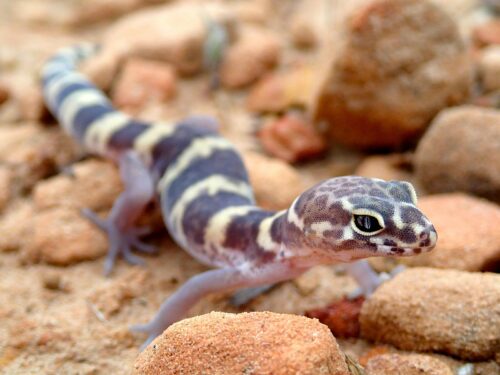Image Courtesy of Wikimedia.
What came first: the iguana or the gecko? Lizards are one of the most diverse groups of species living on planet Earth, encompassing iguanas, geckos, and more. For years, researchers have wrestled between conflicting reconstructions of the lizard evolutionary tree, which disagree over when the geckos diverged from a common ancestor. Long-standing evidence from fossil records shows that iguanas existed before geckos; however, recent molecular data suggests that geckos may have diverged first.
Dalton Meyer, a graduate student in the Yale Department of Earth and Planetary Sciences, sought to resolve the disagreement between the fossil record and molecular evidence by researching the body morphologies of lizard ancestors. If geckos were truly the first to diverge, the ancestors of geckos and other lizard groups should resemble geckos more than iguanas.
In a recent publication in the Royal Society, a team of researchers consisting of Meyer and his colleagues confirmed the discovery of a new species of gecko ancestors. Their fossils were excavated from the Late Jurassic Morrison Formation in Utah—a famous site for dinosaur fossil sourcing. Previous analyses had initially identified the fossils as a member of the Paramacellodus taxa—an extinct genus of lizards from the early Cretaceous and late Jurassic eras. However, after examining high-resolution computed tomography (CT) scans of the fossils’ skulls, Meyer found a different result. “Some of the lizards from the monument are early skink relatives, but others like Helioscopos are not,” Meyer said. The fossils were revealed to be an entirely new species: the oldest known gecko species in the Americas. This discovery shifts the timeline for the earliest potential arrival of geckos to the Americas back by one hundred million years.
For Meyer, the name of his newly discovered species carries deep personal meaning. Meyer chose to name the species Helioscopos dickersonae after his grandmother, Helen Dickerson, and his great aunt, Shirley Dickerson. These two figures greatly influenced his aspirations to become a scientist. Coincidentally, the Dickerson last name also matched that of Mary Cynthia Dickerson, the first herpetologist curator at the American Museum of Natural History. “It kind of was serendipitous that the name worked on all those fronts,” Meyer said. “Mary Cynthia Dickerson is a massive figure in American herpetology, and [the name] honors the early contributions of women in science at a time when it was difficult for them.”
Using both morphological and environmental clues at the site of the discovery, Meyer pieced together what life might have looked like for Helioscopos dickersonae. The pineal foramen, which is a hole found on the skulls of Helioscopos dickersonae, monitors light signals from the environment to regulate circadian rhythms, revealing that the species did not live primarily underground, nor did it have a nocturnal lifestyle. Meanwhile, sediment buried with the fossils and nearby plant fossils suggests that Heliosscopos dickersonae resided in a dry floodplain environment. By analyzing these clues, researchers can understand how lizards evolve and adapt throughout various ecological environments.
Meyer and his colleagues will continue working toward reconciling the discrepancies between genetic and fossil evidence. The team is currently researching the evolution of ankle and wrist anatomy among lizards and hopes to examine fossils of similar ages to Helioscopos dickersonae. By learning more about lizards in our planet’s past, scientists believe they can leverage their knowledge to maximize lizard conservation through the current climate crisis.

